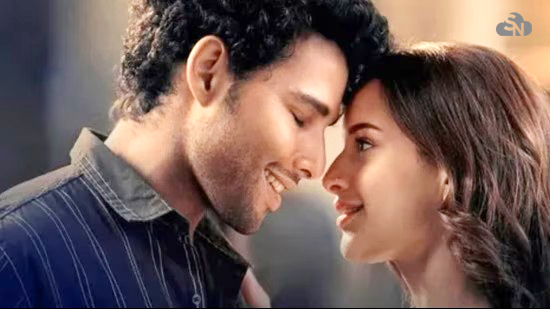Dhadak 2 Cast: Triptii Dimri and Siddhant Chaturvedi
Director: Iqbal Shazia
The primary problem with Dhadak 2 is that it takes an excessive amount of time to determine its true purpose.
Two scenes in the movie made me think of 3 Idiots—yes, I realise it’s a whole different genre, but bear with me. The first is when the character played by Siddhant Chaturvedi says, “This wasn’t suicide; it was murder,” which is reminiscent of Aamir Khan’s Rancho. A comparable emotional area is used in the scene’s construction. It also reminded me of the scene where Rancho’s professor raises his hands and asks, “What are you trying to say?” While seeing Dhadak 2, that same sensation keeps coming up. Here’s why.
Dhadak 2 is a remake, just like its predecessor. The 2016 Marathi hit Sairat served as the inspiration for the first. This sequel takes inspiration from the 2018 Tamil film Pariyerum Perumal, reimagining its story for a new audience. Rarely deviating from the original, director Shazia Iqbal honours the original.
The premise
Both Vidhi (Triptii Dimri) and Nilesh (Siddhant Chaturvedi) attend a law school. Nilesh is from a lower caste, whilst Vidhi is from an upper one. He attracts Vidhi, who initiates contact. Given the possible repercussions, Nilesh is apprehensive. Nilesh is humiliated by her family, who vehemently reject their relationship. Nilesh stays emotionally involved while Vidhi withdraws. What follows? Do they get back together? Or does this tale, like the first Dhadak, end tragically? To find out, you must watch.
Dhadak 2’s identity conflict is its main issue; it takes too long to get going. When it does, it finds it difficult to keep up the flow of the story. The romance takes up nearly all of the first half, which drags. Although Rahul Budwelkar and Shazia Iqbal’s script makes a concerted effort to create chemistry between the protagonists, it never feels natural. Interestingly, despite featuring newcomers Janhvi Kapoor and Ishaan Khatter, the original Dhadak managed to capture the innocence of first love more convincingly.
What Is Too Much Struggle?
Dhadak 2, on the other hand, attempts to balance a number of issues, including political subplots, caste-based violence, and even a psychotic killer who targets young people from lower castes who dared to date outside of their caste.
As the film piles on conflict after conflict, you can’t help but wonder—where’s the limit? Yet, it’s in the second half that the story truly begins to find its footing and speak with clarity. It abandons the forced romance and addresses the fundamental problem of discrimination based on caste. Nilesh retaliates. The tension increases. For a time, the movie is really compelling. Subtly threaded throughout the story are threads that examine women’s rights.
Excellent Potential, Poor Performance
Although Dhadak 2 had promise, it falls short due to subpar editing. Sangeeth Varghese and Omkar Uttam Sakpal, the editors, could have easily cut twenty minutes. The emotional effect of the conclusion is diminished when it turns preachy. The conclusion seems hurried and unearned, despite its promise of a brighter future.
Nevertheless, the movie deserves praise for its honest depiction of challenging sequences. Some scenes truly deserve praise, and the sensitivity of the subject matter is evident.
Performances
Siddhant Chaturvedi gives a powerful portrayal of a young man who is stuck in an unjust system but is determined to get free. Triptii Dimri portrays a complicated character who is divided between her love for Nilesh and her family’s strict religious views. However, Siddhant steals the show in the second half, giving his part nuance and emotional impact.
Saurabh Sachdeva is a good fit for his evil part, and Zakir Hussain does a good job as the college principal.
Though there are some parts that may have been improved with a deeper connection to the plot, the music, which was composed by Rohan Kohli, Tanishk Bagchi, Javed-Mohsin, and Shreyas Puranik, doesn’t make an impact.
The final judgement
The film Dhadak 2 has a strong message, but it is delivered clumsily. When it does discuss caste, oppression, and systematic injustice, it does so in a way that resonates. However, its overall impact is diminished by a disjointed plot and an excessively long runtime. This had the potential to be a potent social drama. Rather, it makes do with a few standout moments tucked away in a narrative of lost chances.

